The bite is on, but The Captain’s project boats are laid up in dock (see story on Shark Cat steering fit-up hereabouts). Never mind, there’s always a salty mariner keen to take The Captain for a spin and show off their new vessel. In this case, it’s a highly customised double-decker Grady-White 370 Express. It so happens the owner also has a shit-hot crew on standby. Grab the Talicas and let’s go.
Pack your sleeping bags and pillows because we’re not coming home until we’ve caught a marlin,” barks an enthusiastic Rod Findlay over the phone. We’ve got arguably one of the best crews in Sydney — Rod at the helm, Ryan Short on the deck and Jay Kim on the rod, as well as the owner of the vessel, who prefers to stay under the radar — we’ll call him Cap’n X. All The Captain has to do is sit back, take a few photos, swig a few rums and wait for the magic to happen.
INTO THE BLUE
If you’ve driven past the Spit Bridge in Sydney lately, you’ve probably noticed — or drooled over — a Grady- White 370 Express with a custom tower sitting in her berth at Ferguson’s Marina. She’s a beautiful piece of saltwater machinery — an absolute credit to the owner for dreaming it up and the guys at Short Marine for making it happen. After many months of adoring her lines, it was finally time for The Captain’s crew to take a ride.
Like most fishing trips, it starts in the early hours of the morning with a Maccas coffee in hand. Ryan welcomes us aboard the beast, while Rod and the crew load gear and fire up the Furuno displays. Based on the extent of the electronic gear, it might take a while. The plan is to head to a good patch of water Rod has found down south. The best bit of the temperature break is off Jervis Bay, but there’s a lick of nice water off Port Hacking — we’ll start there.
With the bait grounds off Sydney not playing the game, we steam the 370 Express down the coast to Port Hacking heads at 40 knots. We quickly fill the Grady’s giant 182L live well with string after string of slimy mackerel — and snare a couple of dolphinfish on metal slugs while bait collecting. “If they’re in this close, we’re surely in for a good day,” Jay says. Loaded with liveys, we steam east. “The strategy today is to fish a couple of public and private FADs,” Rod shouts from the lower helm. “We’ll troll a marlin spread around the area first in the hope of picking up a beakie. If we don’t turn a reel, we’ll head up-current of the FADs, deploy a live bait and drift back towards them.” On approach to the mark, Rod tickles the three Yamaha 425s down from roar to purr. Ryan and Cap’n X get to work setting up the teaser and dredge while Jay rigs up live slimeys to switch bait. The program consists of a stripteaser off a dredge, two hookless Pakula Sprockets off each outrigger and a single hooked lure down the centre. “The main aim is to see the marlin before it eats anything and then deploy baits to get a better conversion rate,” Rod says on his way up the ladder to the tuna tower.
DOLPHINS ON THE DECK
We troll the surrounding area for about an hour before Rod makes the call to live-bait the FADs. In come the teasers and out go the slimeys. We run up-current of the floating buoys and drift our liveys back across them. On every drift, a big mahi mahi smacks our live bait, we free spool for a moment then slowly up the drag pressure, hoping for a clean hook set on the circle. The dollies immediately jump after being hooked, and a few get away. But after 30 minutes, we’ve got enough mahi to feed a mob. However, Rod’s getting antsy in the tuna tower. “Dolphinfish are regarded as a pest by many fishos,” he says. “I don’t mind catching one or two for the table, but any more than that and it’s a distraction from our main objective: marlin fishing.”
We agree we’ve probably caught enough and get back to business — let’s troll. With the teasers back out and pitch baits ready to roll, we head up to the tower to soak up some of Rod’s billfish wisdom. “The sweet spot for striped marlin off Sydney is around 80–100 fathoms (146–183m),” he says. “Just add solid bait readings, nice water and you’ll be in for a shot. We’ve caught them in water from 18 degrees up to 27-degrees — but 23 degrees is ideal.”
Right on cue, Rod spots a striped marlin free-swimming near the boat. With a loud shout from the tower, Cap’n X complies and pitches the bait. Jay hits the cockpit floor and is handed the Talica 25 setup. Apparently no one is keen on winding fish on this boat. The marlin, oblivious to the crew’s antics, instantly locks on and swims towards the worried slimey. Jay free-spools the bait and line starts to run off the reel. After feeding out 20m of line, Jay tightens the drags and the rod loads up. The fish heads for the surface and puts on an epic aerial display. The crowd goes wild as Rod backs the 370 up like Nicki Minaj at a twerk fest, water splashing over the triple Yammies into the cockpit. Jay leans into the fish for about 15 minutes until the striped bandit is boatside.
The gang is pumped — The Captain’s crew even venturing into the deep blue to photograph the fish in the water. After a successful release and high fives all round, we debrief with Rod. “We were very lucky to see the tip of that striped marlin’s dorsal fin from the tower,” he says. “Being able to turn around and pitch a bait at him was magic. If we didn’t have that elevated view, there’s no chance we’d have caught that fish.”
ALL BOXES TICKED
With spirits high and all the fishing boxes ticked by the arvo, we make the call to head back to home base. Rod whacks the 370 into cruise speed and sets the autopilot. The lads crack a beer and chill out on the plush seats. The hull eats up the quartering chop like it’s nothing and we’re able to easily chat to the person sitting next to us without shouting above the outboards. As we swing around Sydney Heads, Rod shows us what the 370 is capable of, dumping her into sharp turns and powering out quickly. For a serious game boat, she’s pretty manoeuvrable. Back at the dock, we sit down with Cap’n X to discuss the project from go to whoa. “I always wanted to get a boat with a tower,” he says. “I also liked the express style as it makes fishing much more social. “I chatted with Ryan and Cam from Short Marine.
We hatched a plan, and set about thinking things through. Cam and I spent a lot of time together. He is a very knowledgeable. In the end, the fitout wasn’t just one project. There were about a dozen projects to get her where she is today.” Paul Selby fabricated the anodised aluminium for the tower while Short Marine’s shipwrights and electricians did the glassing and electrical work. Other custom work included teak flooring, installing a water maker downstairs and removing the electric BBQ and replacing it with tuna tubes. “The most important thing with all the customising was that they needed to be accessible and serviceable,” he says. Cap’n X reckons the tower was not a given. “ We weren’t sure it was even going to be feasible on this boat, so we got in touch with Grady-White USA to talk about weight and hull design. After a few emails and calls, we decided it’d work and we wouldn’t lose any of the characteristics of that Grady-White ride.”
On the performance front, Cap’n X had a hint of initial trepidation at the sea trails. “The first sea trial was a ‘proof of concept’ moment. Dynamically, we’d raised the centre of gravity a little with the tower, and it took a few runs to sort out how to make her run 100 per cent in different sea conditions. Rod, Cam and Ryan were all over that and it did not take long to have that sorted. Like all Gradys she loves a following sea, but set up right for the conditions she is great running into a head sea or quartering sea. The 37ft Grady hull has always been soft landing, and that shines through. With triple outboards and the trim tab system, you can adjust the ride and run how you like it. With some different props added as part of the sea trials, the triple 5.6L V8s will push her along at 43 knots fully laden with fuel, gear and six people, but that type of speed is only for showing off on flat water.”
“Outboard-powered boats offer a bunch of advantages over diesel,” Rod chimes in. “There’s next to no smell, no vibration and if you have any issues, there are just four bolts, the motor comes off and a new one gets dropped on. I reckon more people will definitely go down this path in the future.”
TALKING TACKLE
Once the dust had settled and the mahi mahi were gobbled up, Jay Kim invited us to talk tackle at The Fishing Station in Mona Vale, where he works. If you’re from Sydney, you probably already know that this store, run by Alex Qasabian, stocks an insane amount of top-quality kit. From behind the rigging bench, Jay busts out the gear we used on the 370 trip. Most people would be surprised to see such a big game boat without the usual arsenal of huge, gold-blinged reels filling the rocket launchers. Instead, the guys are running a full suite of Talicas. “The Talica 25s have been fantastic for striped and black marlin,” Jay explains. “We’ve been using them for a few years now. The lightweight bodies and faster retrieve speeds with the 5.2:1 gear ratio are awesome for chasing down billfish on the surface. Not to mention, fighting big fish on small gear is really half the fun — that’s real sportfishing. Cap’n X upgraded the Talica 25 handles to Talica 50 handles so we could get even more cranking power. Some people might think line capacity would be an issue, but with the braid backing rule now, that’s not a problem.
Another handy thing about these outfits is that you don’t really need a harness. I’ve fought marlin for over an hour, with just a gimbal, and didn’t get fatigued at all.” Along with the Talicas, the 370 squad runs a selection of Saragosas on Grappler rods. “These outfits are so versatile — you can use them for bait jigging slimeys, trolling for kings or casting for dolphinfish,” Jay says. When we ask him for his top dollie tip, he lays it down simply. “In my opinion, the best way to catch a big dolphinfish is to fish for marlin!” Speaking of which, the boys are running the same rig for their dollies as they do for the marlin. Keeping it simple means there’s less chance for mistakes in fast-moving, high-pressure situations. “We run 130lb Momoi Neo fluorocarbon leader, an Eagle Claw hook — either a Circle Sea or a Billfish Circle depending on line class — and then 30lb Dacron to bridle the live baits with,” he says. “When you get a bite, just like any circle hook, slowly increase the drag and the hook should make its way out of the stomach and into the corner of the fish’s mouth.” Easy as that, apparently.
THE BRAIN INSIDE THE BEAST
When it comes to electronics on boats, The Captain considers himself quite well versed. However, this 370 Express is a whole other kettle of fish. Instead of trying to explain the Furuno onboard systems, we asked Ryan Short for the technical lowdown.
AUTO — OR READ THE MANUAL
As the skipper, you can select “Auto” on everything, and, hey presto, it works pretty well. But if you fancy yourself as an engineer who fishes, there are 1000-plus pages of super-detailed tech manuals to explain every possible setting. This is what happens when you make commercial products available for recreational users, but it does allow the operator to tune things the way they want it. If you mess up, and you will, “Restore Factory Settings” is the go. The smart move is to speak to the Furuno folk, who can hook you up with some decent base settings.
NAVIGATION
A Furuno SC-33 satellite compass that hooks into GPS satellite networks — and adjusts the fishing equipment for heave, pitch and roll. The DRS6ANXT radar, with a 6ft array, 72nm range and a host of detection and tracking systems is great for safety. The FLIR 625CS thermal/optical camera, with high-resolution FLIR and x 30 optical means you can come home in the dark — and spy on other boats.
The FA-50 class B AIS black box, processed by TimeZero software, ensures the skipper will never run into another boat with AIS — red passage lines mean “No”, green passage lines mean “Go”. There’s a FM-4800 VHF with AIS, main unit in the helm and a second handset in the tower, with super-high Shakespeare VHF antennas that deliver cracking good reception. It’s not an advantage when the idiots are on Sydney 21, but on other days it’s great, because you can speak with fishos up and down the coast.
DISPLAYS
There are three Hatteland 17-inch multiple-input touchscreens in the helm running MaxSea TimeZero Professional v4xx on two fan-less high-performance computers running Microsoft Windows 10, with Logitech wireless keyboard and trackball input devices. The TZ Pro is the best fully featured navigation software available, with next-level sports fishing features and fully integrated into the Furuno gear, including charting the boat’s PBG (personal bathymetric generator) recordings.
MaxSea is always updating the software and recent changes include augmented reality overlays for camera displays and some cool ways of showing fish schools. The software could take a three-semester TAFE course to learn, but the effort is worth it. The Tz2/16-inch MFD in the helm and Tz2/12-inch MFD in the tower run the latest MFD version of TZ. The MFDs can operate independently of the MaxSea computer-based systems, adding a level of redundancy.
FISHING
Up and down: (a) FCV-1150 two-channel commercial grade network echo sounder (oldschool beast); (b) DFF3 two-channel network echo sounder (like a stripped-down FCV-295 in a black box, improved by recent software upgrades); (c) DFF1-UHD two-channel network CHIRP echo sounder (old-school CHIRP, but can keep up with the new players); (d) DFF3D network echo sounder (new school beast of a thing, with 120-degree swath, 3D-modelling capability and runs at 165Hz, so great for pelagic hunting as it finds bait really well — and helps new fishos, and some old, work out port or starboard turn; (e) Tz2 16 network echo sounder (built in to MFD device, vastly improved with v2xx software); (f) Tz2 12 network echo sounder (built in to MFD device, vastly improved with v2xx software).
Round and round: CH-600 dual-frequency. searchlight sonar. Super beast equipment, but does takes some serious personal commitment to learn how to set it up, use it and then get your head around what it’s telling you. It has real potential to be a game changer — more catching, not just fishing. It can also be used for navigation — think that big big reef off FNQ. The round-and-round technology is becoming more common on gamefishing boats, but relatively few admit to it, so the silence might be an endorsement. Good gear if the boat can accommodate it, and if you spend the time to learn it and use it in the correct conditions.
TRANSDUCERS
Seven actual transducers from a hardware point of view — 38, 82B-35R, beast low and mid CHIRP, B54, B275LHW, B260 and B175HW — ranging from 1kW high-wide pelagic hunters to 2kW and 3kW deep/really deep-water hunters. Capable, when you have read the manuals, of generating nine different frequencies at the same time — but it could be 11, with split-frequencies feature on the Tz2s — and ranging from a 3kW 38 Hz through to 1kW highwide CHIRP, with medium frequencies in between, including the adjustable 82B-35R and the B54 120-degree (compared to the normal 25 degrees of a HW or 40 degrees of an UW) 165Hz Furuno fiveelement transducer. For the CH600, its transducer protrudes in and out of its own space and rotates 360 degrees. Big and heavy, this is commercialgrade gear.
INTEGRATION TO OTHER SYSTEMS
Tz2 16/12 display and control of Yamaha XTO425 systems and information, and full control of Fusion Apollo-based multi-speaker sound system.


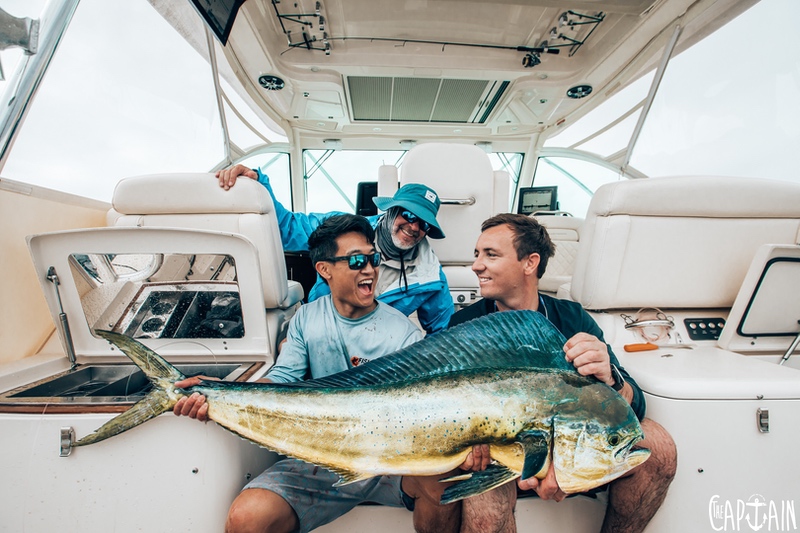


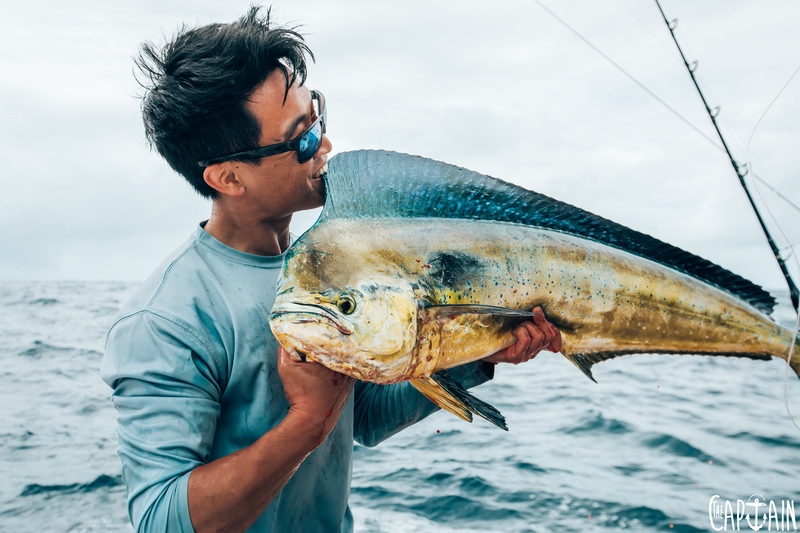

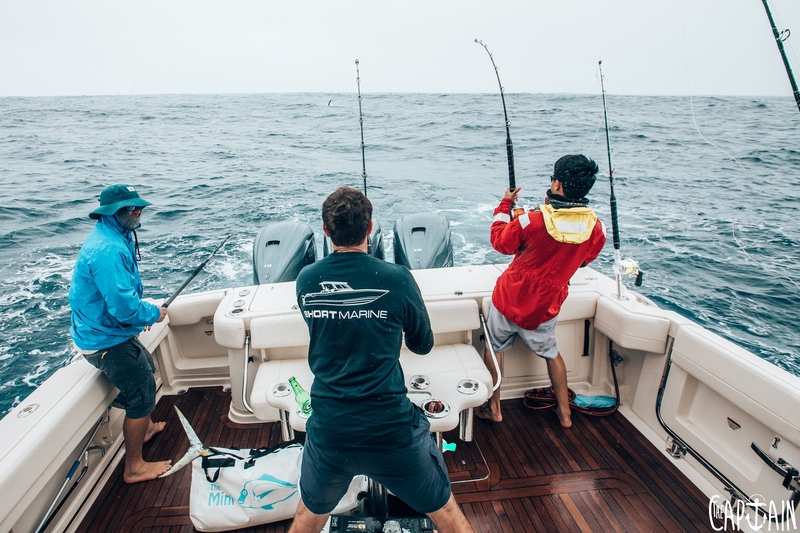





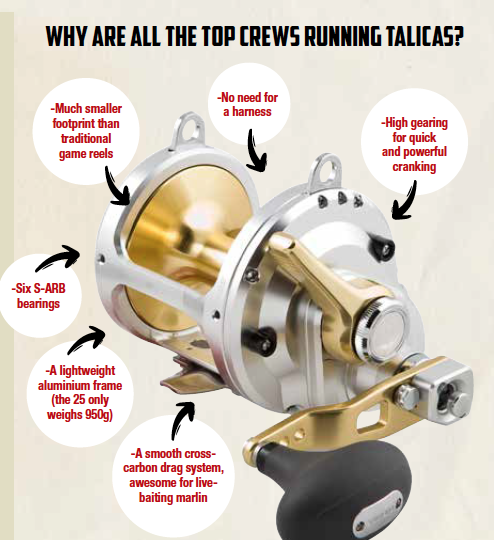



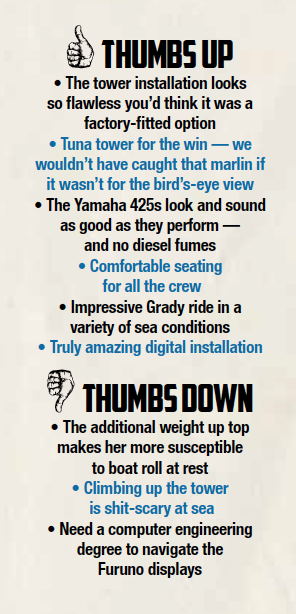
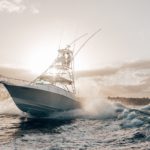
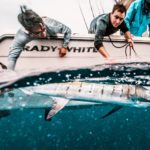
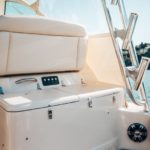
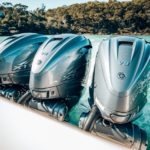

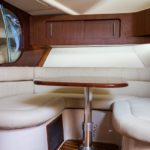
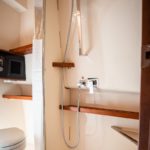
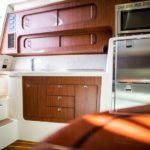
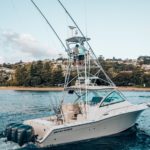
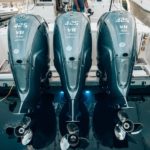
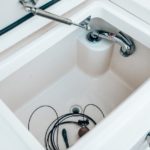
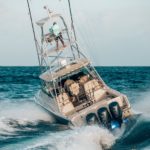
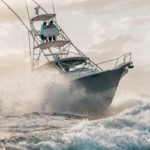
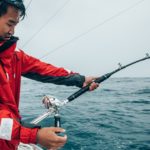
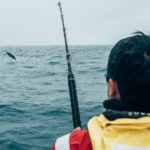
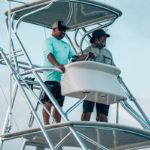
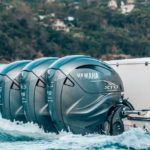
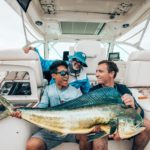
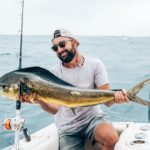
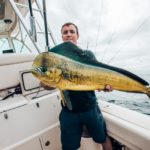
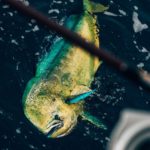
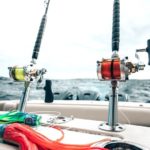
Recent Comments